Effective emissivities as well as radiance temperatures derived from them depend on viewing conditions (i.e., geometrical conditions of collecting the radiation by a measurement device). Pictures below present the most common type of viewing conditions for axisymmetric radiators.

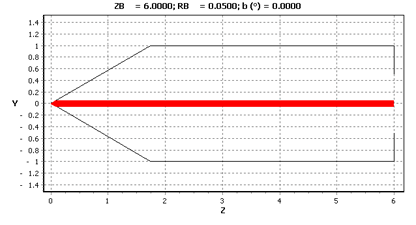
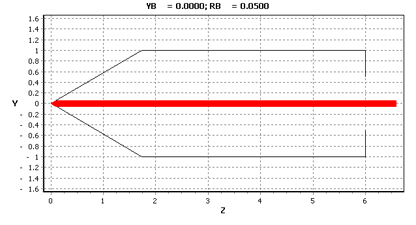
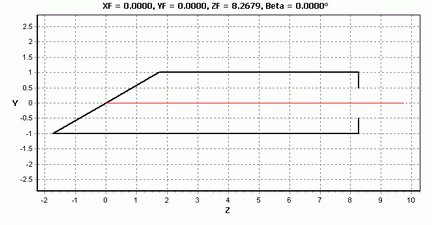
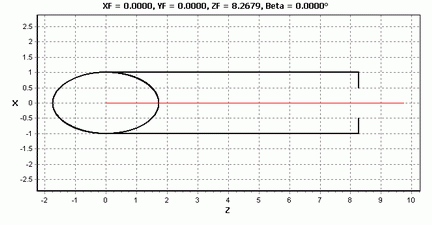
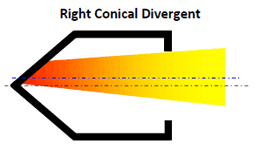
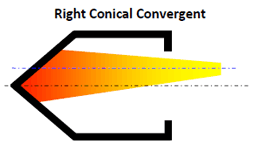
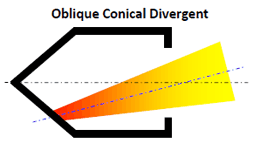
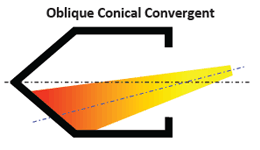
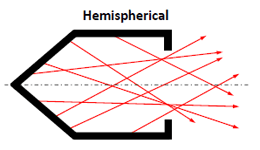
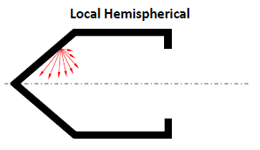
Normal viewing conditions corresponds to cavity observation in parallel rays; the viewing beam axis is parallel to the cavity axis and has a circular cross-section. Normal viewing conditions imitates collecting of radiation using long focus optics, or by the optical system focused at infinity. The viewing beam diameter is defined by the pupil of the optical system, or by external diaphragm. If the viewing beam has very small diameter, the dependence of effective emissivity on the beam position characterizes spatial uniformity of cavity radiation.
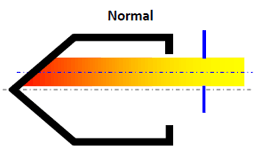
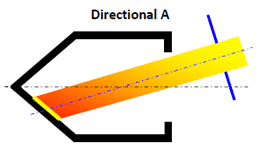
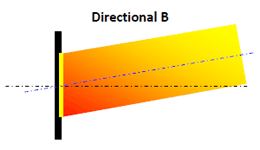
More frequently, Directional A viewing conditions, when the viewing beam has a circular cross-sction, is used. If the axis of the viewing beam passes through the center of cavity aperture, dependence of the effective emissivity on the angle between two axes characterizes angular uniformity of cavity radiation.
In the case of Directional B viewing conditions, cross-section of the viewing beam is elliptical, while the region of its intersection with the radiating surface is circular. This type of viewing conditions can be used primarily for "flat" blackbodies; instead of beam axis, the "line of sight" is considered.
Right Conical viewing conditions mimic cavity observation using optical system with the finite focal length. The simplest pinhole model of optical system is used. The viewing beam is the right circular cone whose axis is parallel to the cavity axis. If the vertex of ray cone lies behind the cavity, the viewing beam is considered as divergent, otherwise as convergent. Rays forming the viewing beam are modeled to be uniformly distributed within conical sold angle. This kind of viewing conditions is most common in practice.
Oblique Conical viewing conditions is less common. The only difference from Right Conical viewing conditions is that the viewing beam axis is not parallel to the cavity axis. Usually, the case when both axes lie in a common plane is considered.
For Directional viewing conditions, the axis of the collimated viewing beam is not parallel to the cavity axis.
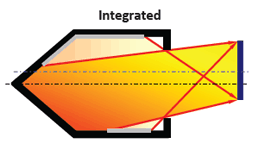
Integrated viewing conditions correspond to the case of cavity radiation registering by the detector without optical system. Such viewing conditions are realized, for instance, when absolute measurements of irradiance or total radiant flux are performed. Usually, it is supposed that a circular detector is placed in the plane pareallel to the cavity axis. In some cases, detector cannot "see" the whole radiating surface of a cavity. Correspondingly, not all the radiation of some parts of radiating surface reaches the detector. These areas often called "penumbra zones" are shown in gray.
Local hemispherical effective emissivity is the quantitative measure of radiative heat loss from the unit of cavity wall area. Spatial distribution of local hemispherical effective emissivities can be used as the input for calculation of temperature distribution over the cavity internal surface.
Hemispherical viewing conditions can be considered as a special case of Integrated viewing conditions if receiving surface coincides with the cavity aperture. Hemispherical viewing conditions allow to calculate the radiant flux emitted by a cavity as a whole.
procedure called targeting that is visualized ray tracing of a limeted number of rays toward the cavity until first bounce. Targeting allows to evaluate the directly visible area of the radiating surface and to avoid errors in specifying parameters of viewing conditions. Moreover, targeting allows to watch in real time modeling of a variable parameter of viewing conditions.
Normal viewing condition; radial scanning is performed to evaluate spatial non-uniformity of aperture radiance
Conical viewing conditions for the cavity with inclined bottom; evaluation of the effective emissivity dependence on the field-of-view span angle
Directional viewing conditions; angular scanning is performed to evaluate deviation from cosine law
In practice, other, more "exotic" viewing conditions can be used. Virial International offers customization of the existing software to satisfy customer requirements including those to viewing conditions.

